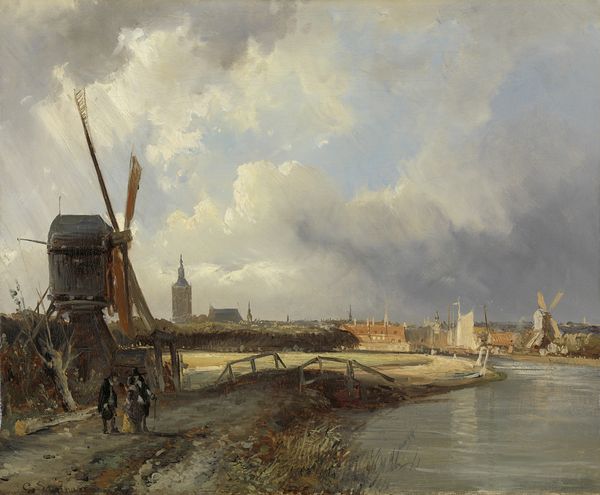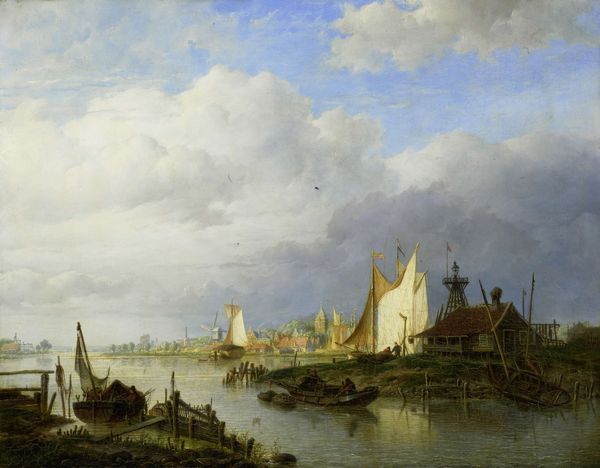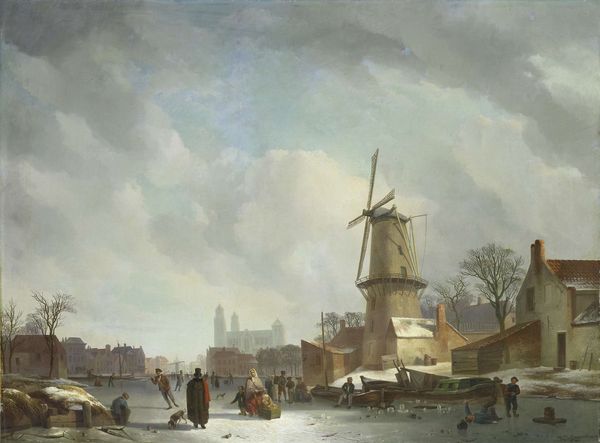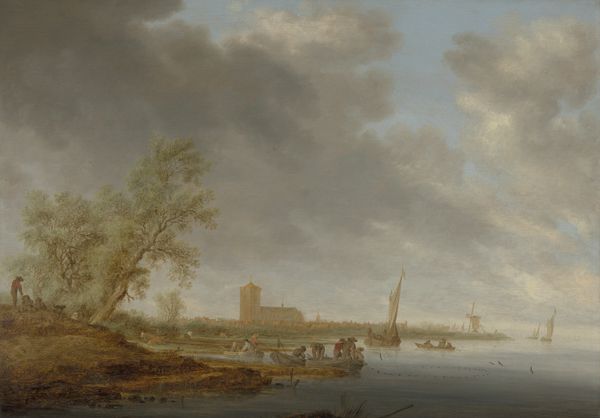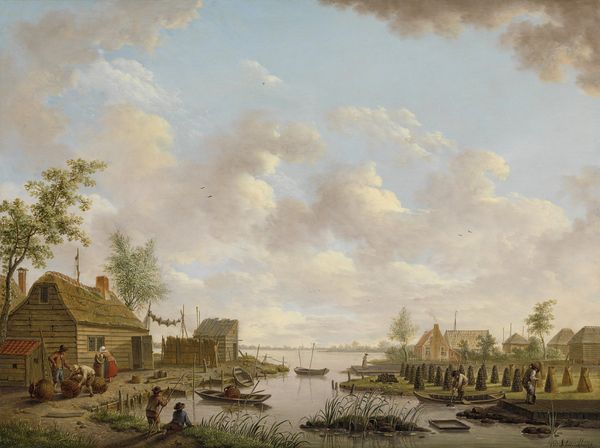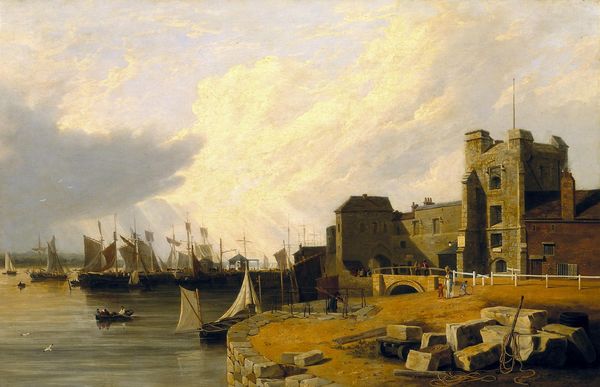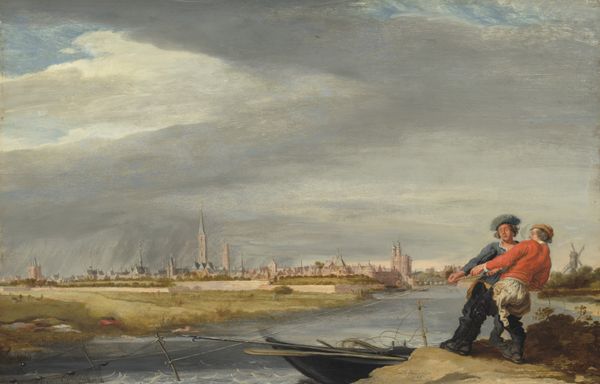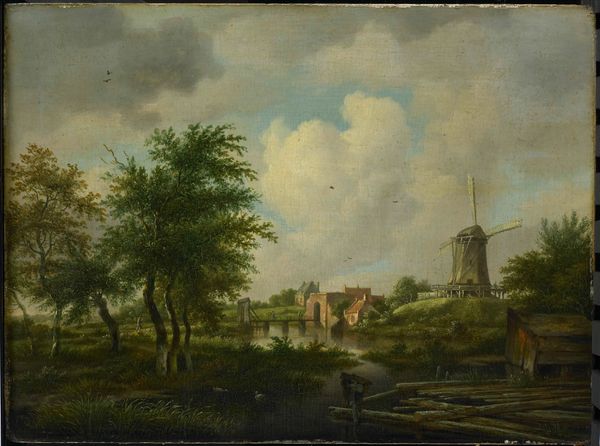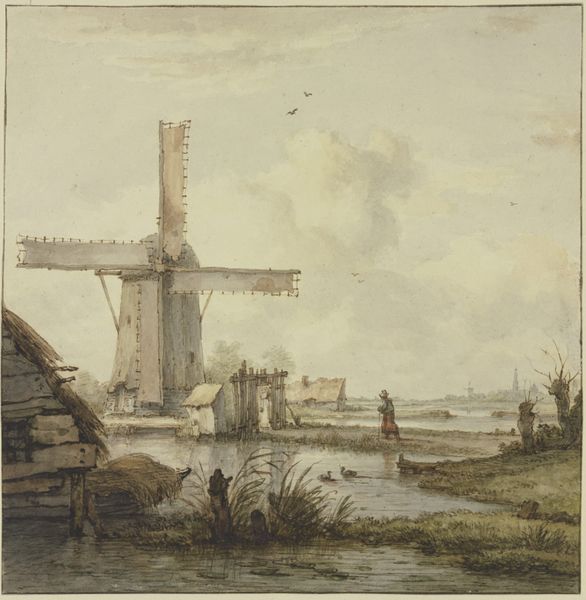
View of The Hague from the Delftse Vaart in the Seventeenth Century 1852
0:00
0:00
painting, plein-air, oil-paint
#
dutch-golden-age
#
painting
#
plein-air
#
oil-paint
#
landscape
#
oil painting
#
cityscape
#
genre-painting
#
realism
Dimensions: height 200 cm, width 340 cm, depth 9.5 cm, weight 54 kg
Copyright: Rijks Museum: Open Domain
Cornelis Springer painted this oil on canvas, "View of The Hague from the Delftse Vaart in the Seventeenth Century," seemingly capturing a serene moment in Dutch life. Yet, it is the imposing windmill that dominates our visual field, a symbol laden with meaning. The windmill, in its essence, represents human ingenuity harnessing nature’s power. It is a motif that reappears across cultures, from Persia to Europe, each time carrying connotations of progress, industry, and control over the elements. Think of Don Quixote tilting at windmills, an early 17th century story in which these structures become symbols of delusional battles against modernity. Here, Springer presents the windmill as a stoic observer, silently witnessing the passage of time. The psychological undercurrent suggests a collective memory of resilience, an emblem of Dutch perseverance against the odds. This image resonates as a powerful force, engaging viewers on a subconscious level by reminding them of the constant negotiation between nature and human ambition. The windmill motif evolves, adapting to new landscapes of meaning. Its story is not linear, but cyclical, resurfacing and transforming across history.
Comments
No comments
Be the first to comment and join the conversation on the ultimate creative platform.
